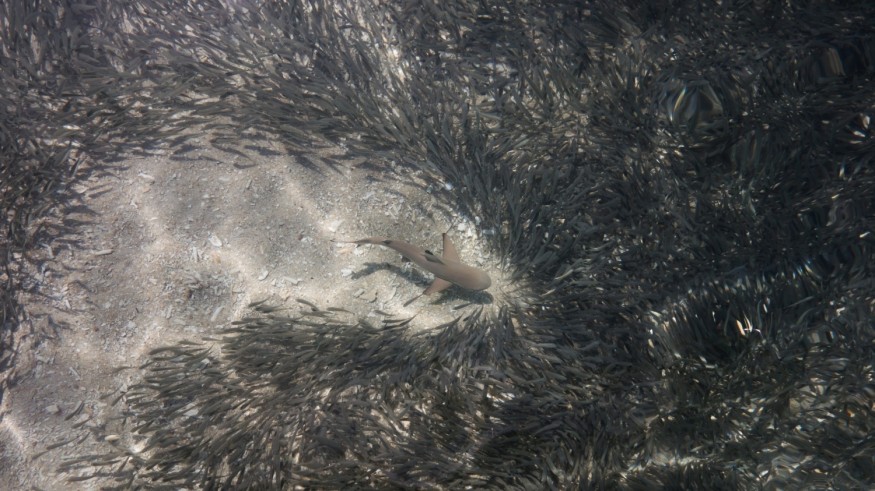Sharks are the most deadly marine predators, yet marine biologists have spotted an intriguing behavior of some fishing chafing against a shark's skin. Scientists from the University of Miami captured 47 instances of this unique behavior in over a dozen locations around the world.
As they pore through the underwater videos, photos, and drone footage, researchers said in the university's press release that this cross-species behavior is more pervasive than previously thought.

Fish Use Shark's Skin to Exfoliate
As scientists were using a drone to follow a great white shark in Plettenberg Bay, South Africa, they noticed that a school of meaty leer fish did not turn away and flee when they encountered the shark. Instead, they actively pursued it and started rubbing their bodies against its tail as though they were using the shark's skin as an exfoliating pumice stone.
According to a report by Scientific American, this strange behavior has intrigued scientists and even more so when other members of the team have observed this behavior over and over again. The shark chafing was not the food their study, but it did open many questions since not all prey would openly scratch up against their predators.
Previous studies have also shown that chafing is common among animals, like sharks chafing on sand and rocks to remove parasites and bacteria or some barracuda chafing on sea turtles. Although this was not the first time such behavior was observed, their study is the first to formally study this intriguing behavior.
In their study, titled "Sharks as Exfoliators: Widespread Chafing Between Marine Organisms Suggests an Unexplored Ecological Role," published in the journal Ecology, researchers wrote that fish-on-shark chafing is more common than previously thought. This led researchers to believe that this behavior must serve some ecological function to evolve in several species.
ALSO READ : Two Female Sharks Reproduce Offspring; Recorded as First Case of Asexual Reproduction in Italy
Shark Chafing is the Only Time a Prey Approaches Its Predator
Scientists suspect the chafing behavior might play a vital role in removing parasites and other skin irritants off the fish and improving their overall health and wellness.
According to Daily Mail, sharks appear to be unbothered by the fish based on the video footage as they did not attempt to snack on the fish surrounding them. Experts suggest that this shark chafing phenomenon might be the only time in nature that a prey actively seeks out its predator and does it without getting killed.
Furthermore, previous studies have shown that even other shark species also do chafing, albeit to inanimate objects like the sand. But there are also instances when even an eight-foot shark would exfoliate against massive whale sharks that can reach up to 60 feet in length.
More so, humans have tried getting pedicures from tiny Garra rufa fish as they nibble on the hard skin and soles of the feet. But these relationships appear to be mutual.
Bangor University researchers from Wales have also observed some thresher sharks in the Philippines swimming around schools of wrasse fish that devour their dead skin cells and parasites off their skin. Without this routine exfoliating treatment, sharks would get infections and complications.
RELATED ARTICLE : Greenland Sharks Live Hundreds of Years; Can These Sharks Teach Humans How to Live Long?
Check out more news and information on Sharks in Science Times.
© 2025 ScienceTimes.com All rights reserved. Do not reproduce without permission. The window to the world of Science Times.









